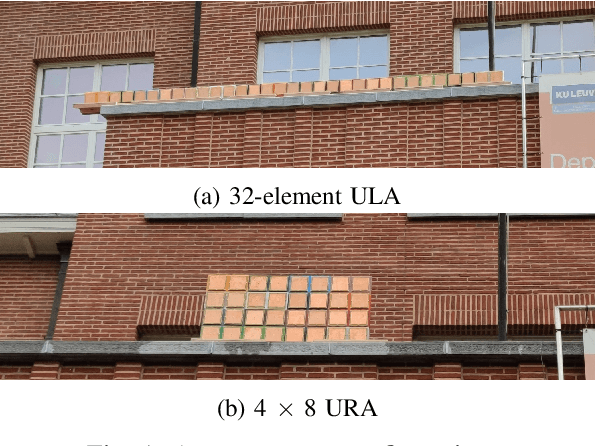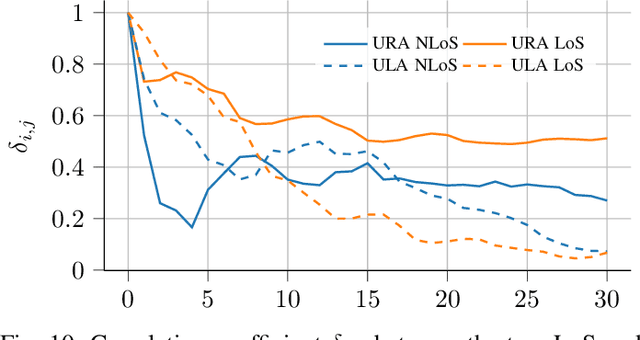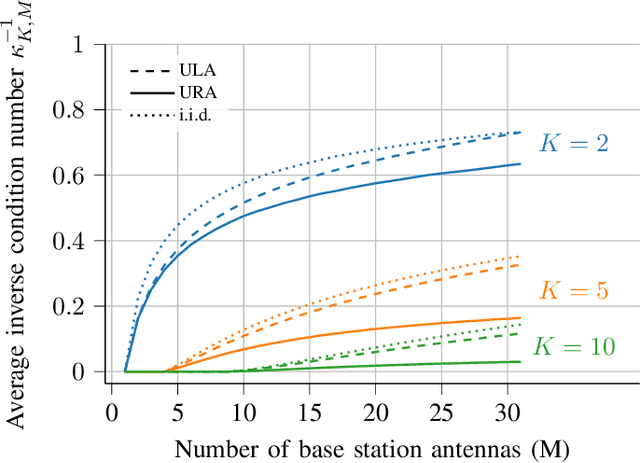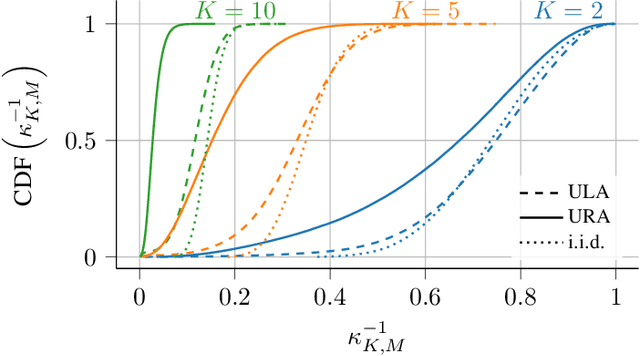Andrea P. Guevara
Location-Based Load Balancing for Energy-Efficient Cell-Free Networks
Apr 29, 2024Abstract:Cell-Free Massive MIMO (CF mMIMO) has emerged as a potential enabler for future networks. It has been shown that these networks are much more energy-efficient than classical cellular systems when they are serving users at peak capacity. However, these CF mMIMO networks are designed for peak traffic loads, and when this is not the case, they are significantly over-dimensioned and not at all energy efficient. To this end, Adaptive Access Point (AP) ON/OFF Switching (ASO) strategies have been developed to save energy when the network is not at peak traffic loads by putting unnecessary APs to sleep. Unfortunately, the existing strategies rely on measuring channel state information between every user and every access point, resulting in significant measurement energy consumption overheads. Furthermore, the current state-of-art approach has a computational complexity that scales exponentially with the number of APs. In this work, we present a novel convex feasibility testing method that allows checking per-user Quality-of-Service (QoS) requirements without necessarily considering all possible access point activations. We then propose an iterative algorithm for activating access points until all users' requirements are fulfilled. We show that our method has comparable performance to the optimal solution whilst avoiding solving costly mixed-integer problems and measuring channel state information on only a limited subset of APs.
Cell-Free Massive MIMO in the O-RAN Architecture: Cluster and Handover Strategies
Jan 18, 2023Abstract:Recently, the O-RAN architecture started receiving significant interest from the research community. The open interfaces and especially the possibilities for network-wide control protocols via the Near-Real Time RAN Intelligent Controller provide a significant amount of opportunities to implement newly proposed algorithms from state-of-the-art research. O-RAN follows the trend towards disaggregation of network functionalities which is especially interesting to deploy Cell-Free Massive MIMO in realistic distributed networks. Many attractive solutions have been proposed for the physical layer in Cell-Free Massive MIMO networks. Unfortunately, only limited work has been performed to map these solutions to the Next Generation of Radio Access Networks, especially also considering the existing control plane interfaces and the impact on network-level resource allocation and handover. In this work, we propose a realistic and elegant method of modelling the temporal evolution of the channel in cell-free Massive MIMO. We then build clustering and handover strategies and provide numerical results for multiple deployment scenarios. To realistically evaluate handovers and dynamic clustering for cell-free in O-RAN, we consider a fixed clustering strategy, which computes the ideal cluster whenever a handover threshold is exceeded, and an opportunistic clustering strategy, where serving units are added opportunistically as the user moves. Additionally, we map an uplink detection method from the current cell-free Massive MIMO state-of-the-art to the O-RAN architecture. We study how the ageing of the channel and especially the user-centric cluster around the UE limits the performance of Cell-Free algorithms. We identify what is currently possible and propose the few needed extensions to O-RAN to fully exploit state-of-the-art cell-free processing schemes.
Experimental Exploration of Unlicensed Sub-GHz Massive MIMO for Massive Internet-of-Things
May 26, 2021



Abstract:Due to the increase of Internet-of-Things (IoT) devices, IoT networks are getting overcrowded. Networks can be extended with more gateways, increasing the number of supported devices. However, as investigated in this work, massive MIMO has the potential to increase the number of simultaneous connections, while also lowering the energy expenditure of these devices. We present a study of the channel characteristics of massive MIMO in the unlicensed sub-GHz band. The goal is to support IoT applications with strict requirements in terms of number of devices, power consumption, and reliability. The assessment is based on experimental measurements using both a uniform linear and a rectangular array. Our study demonstrates and validates the advantages of deploying massive MIMO gateways to serve IoT nodes. While the results are general, here we specifically focus on static nodes. The array gain and channel hardening effect yield opportunities to lower the transmit-power of IoT nodes while also increasing reliability. The exploration confirms that exploiting large arrays brings great opportunities to connect a massive number of IoT devices by separating the nodes in the spatial domain. In addition, we give an outlook on how static IoT nodes could be scheduled based on partial channel state information.
 Add to Chrome
Add to Chrome Add to Firefox
Add to Firefox Add to Edge
Add to Edge